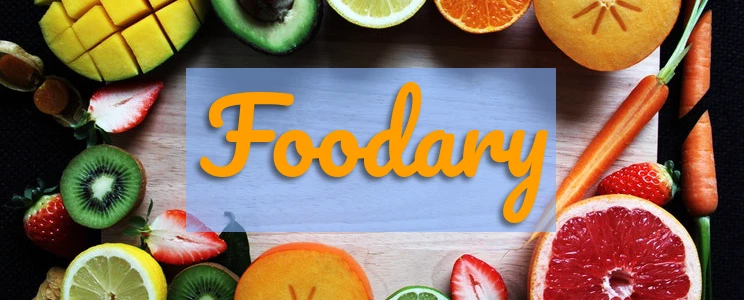
11 Food Journal Benefits
In my introduction to Food Diary Benefits, I described two different types. So here I list general advantages from the act of using a food journal. Then my other report lists specific health gains derived from food journal records.
Food Journal Benefits
Remember, most of these ideas come from clinical settings. So I will explain which features of these research food journals might be useful at home.
- Food Consumption Journal
- To assess the nutrient composition of all food and drink consumed[1]. This is a basic feature of all food diaries that I have used. So commonly you can record calories, protein, carbohydrates, and fats. But be sure to check carefully if you need specific vitamins, minerals, and other nutrients. For example, to measure acid load on your kidneys the minimum Pro/K requirement is protein and potassium.
- Patient Involvement
-
I encourage patients to keep a 2-week diary of food intake and gastrointestinal symptoms. In this way, patients become actively involved in management of their disease, and I may be able to obtain information from the diary that will be valuable in making treatment decisions[2].
This represents a good opportunity to discuss the features of your food journal with your doctor. Before you commit to recording your food consumption. Then you can agree on the mutual benefits you and your doctor can expect.
- Food-related Symptoms
- “Patients completed a daily food journal with special attention to nausea”[3]. So if you’re looking at links between food and symptoms make sure your diary can record non-food events.
- Nutrition Supplement Use
- Here, a diet journal recorded data about fish oil consumption[4]. So you might also consider monitoring your supplement use. But only if your chosen food diary allows it.
- Diet Quality
- Diet was assessed via a food journal to compare diet quality 8 years after surgery[5]. This shows the benefit of long-term food diary recording. So you might see how your eating patterns are affected by significant life events.
- Changing Behavior
- Student behavior was assessed annually by 3-day food journal[6]. Similar to the preceding study this shows how you might use your food diary periodically. Then use snapshots to compare with behavior changes.
- Eating Habits
- This 2-week food journal measured the fish eating habits at dinner and lunch[7]. So this might be useful if you are aiming to eat more or less of certain foods. If that is all you need, you can improve with a simple food journal. That just records the number of times you ate the food in question.
- Calorie Intake
- This 3-day food journal measured average calorie and macronutrient intake[8]. Sometimes you get all the benefits of a food diary without over-complicating things.
- Total Energy Intake
- A food journal was utilized to assess Total Energy Intake[9]. Another simple example.
- Specific Food Intake
- A 4-day food journal identified sugar intake from processed food[10]. Similar to eating habits above. But just one food. So useful if you have trouble with a particular food item.
- Attitude and Achievement
- The final study is unusual. Because it reveals that subjects achieved diet control and better attitude using a food journal[11]. But results were much better when they got text message reminders. So if you want me to start a text messaging service to help you get more from your food diary – just ask!
Note that many of these studies show useful benefits without recording what you eat and drink every day of your life. So think about what you want to achieve with a food diary. Because often you can arrange snapshots at certain times.

Do you need all Eleven Food Journal Benefits?
Your Benefits of a Food Journal
Read through the benefits above and split them into three lists for yourself:
- Helpful Advantages
- Irrelevant Features
- Maybe Beneficial
Spend some time weighing the pros and cons of items in your third list. Also try to discuss them with friends and advisers. Including me if you want to tell me in the feedback form below.
Then you’ll know exactly what benefits you need. So you can make sure you choose the right food diary for you.
This is my second article in this series. So you should also read:
Leave Food Journal Benefits to read Your Food Diary.
Food Journal Benefits References
- Stitt, S et al. “Homeless & hungry: the evidence from Liverpool.” Nutrition and health vol. 9,4 (1994): 275-87. doi:10.1177/026010609400900404
- Wald, A. “Irritable Bowel Syndrome.” Current treatment options in gastroenterology vol. 2,1 (1999): 13-19. doi:10.1007/s11938-999-0013-6
- Passik, Steven D et al. “A pilot exploration of the antiemetic activity of olanzapine for the relief of nausea in patients with advanced cancer and pain.” Journal of pain and symptom management vol. 23,6 (2002): 526-32. doi:10.1016/s0885-3924(02)00391-3
- Metcalf, R G et al. “A practical approach to increasing intakes of n-3 polyunsaturated fatty acids: use of novel foods enriched with n-3 fats.” European journal of clinical nutrition vol. 57,12 (2003): 1605-12. doi:10.1038/sj.ejcn.1601731
- Kruseman, Maaike et al. “Dietary, weight, and psychological changes among patients with obesity, 8 years after gastric bypass.” Journal of the American Dietetic Association vol. 110,4 (2010): 527-34. doi:10.1016/j.jada.2009.12.028
- Wang, May C et al. “Exposure to a comprehensive school intervention increases vegetable consumption.” The Journal of adolescent health : official publication of the Society for Adolescent Medicine vol. 47,1 (2010): 74-82. doi:10.1016/j.jadohealth.2009.12.014
- Nunes, Elisabete et al. “Children’s health risk and benefits of fish consumption: risk indices based on a diet diary follow-up of two weeks.” Journal of toxicology and environmental health. Part A vol. 77,1-3 (2014): 103-14. doi:10.1080/15287394.2014.866926
- Menezes, Prema et al. “Stable Caloric Intake and Continued Virologic Suppression for HIV-Positive Antiretroviral Treatment-Experienced Women After Switching to a Single-Tablet Regimen of Emtricitabine, Rilpivirine, and Tenofovir Disoproxil Fumarate.” AIDS research and human retroviruses vol. 34,6 (2018): 481-485. doi:10.1089/AID.2016.0311
- Coker, Robert H et al. “The energy requirements and metabolic benefits of wilderness hunting in Alaska.” Physiological reports vol. 6,21 (2018): e13925. doi:10.14814/phy2.13925
- Rauber, Fernanda et al. “Ultra-processed foods and excessive free sugar intake in the UK: a nationally representative cross-sectional study.” BMJ open vol. 9,10 e027546. 28 Oct. 2019, doi:10.1136/bmjopen-2018-027546
- Carfora, V., P. Catellani, D. Caso, and M. Conner. “How to reduce red and processed meat consumption by daily text messages targeting environment or health benefits.” Journal of Environmental Psychology 65 (2019): 101319.
